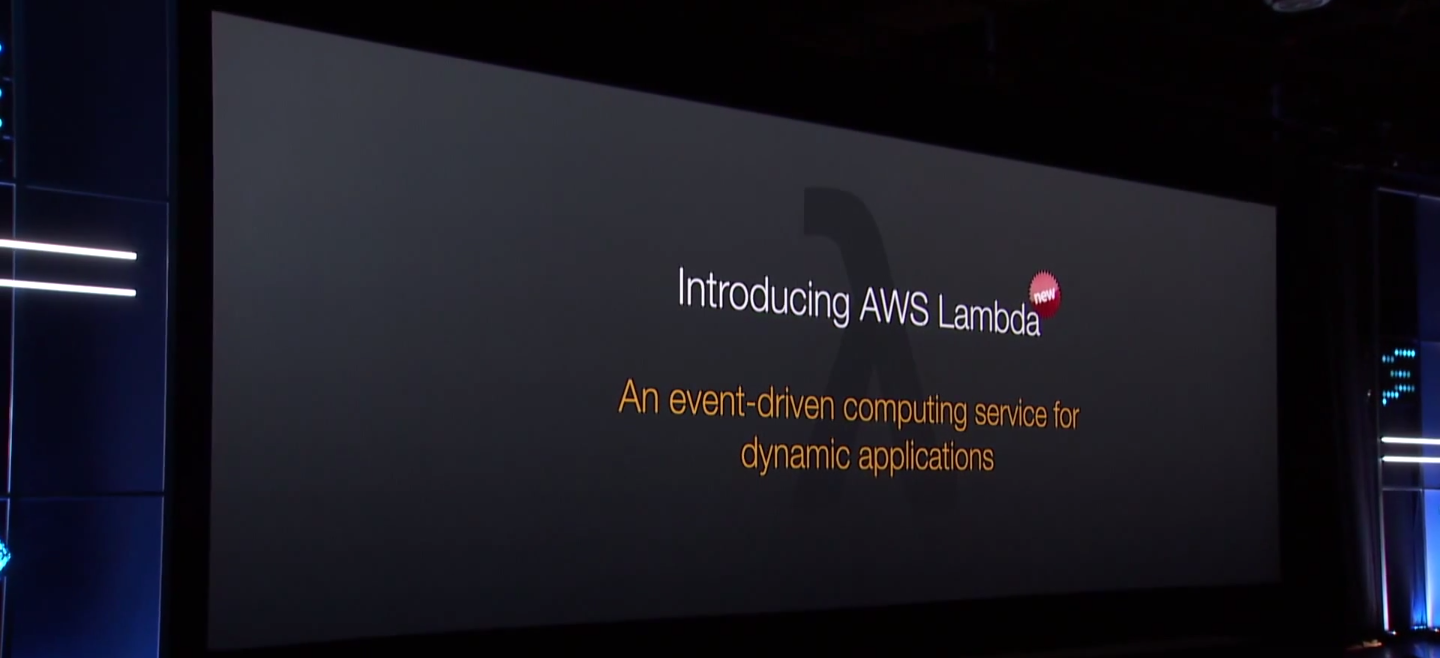At Amazon Web Services’ big annual user conference in Las Vegas this week, executives from the market-leading public cloud made all the moves that spectators were expecting: a few new products, a new generation of server chips for running applications, some customer wins, and greater support for Docker. But one announcement has elicited a rare mix of excitement, curiosity, and even outright confusion from analysts.
That would be Amazon’s reveal of Lambda, which Amazon chief technology officer Werner Vogels simply described as “an event-driven computing service for dynamic applications.” It might sound like yet another service in the Amazon cloud’s ever-expanding portfolio. But really, it’s a major rethinking of the way developers start and stop using computational resources in Amazon’s cloud.
Instead of configuring and maintaining virtual-server infrastructure, developers give Amazon instructions or rules to carry out when certain things happen. For example, when an end user of an application uploads a new image for persistent storage on Amazon, Lambda can ensure that the metadata gets thrown into a database that can be queried later.
All that means Lambda could be a major step forward for software development in the cloud.
“This is revolutionary, or potentially revolutionary,” David Floyer, cofounder and chief technology officer of technology analysis firm Wikibon, told VentureBeat in an interview.
Floyer expects Lambda to give lots of developers the ability to write applications that ordinarily would be very difficult to craft. It could be useful for applications involving the Internet of things, whereby data from connected devices could set off triggers within applications.
And Floyer sees Lambda as a major achievement from a competitive standpoint. He certainly didn’t see it coming.
“There is somebody kicking somebody extremely hard inside of Google and inside of Microsoft,” he said.
At the same time, some people see it as a reinvention of a cloud model that has existed in the cloud world for years now.
On his blog High Scalability, developer Todd Hoff summarized Lambda as “PaaS++” — implying that Lambda is a souped up version of a platform-as-a-service (PaaS) cloud, which abstracts away the hardware underlying applications and merely executes lines of code. Even as he acknowledged its potential, Hoff had caveats. For the moment, Lambda has a limited reach, he wrote, given that it currently only supports the Node.js server-side JavaScript runtime and just a handful of events.
But even with those current shortcomings, Lambda might offer developers capability that’s been hard to pull off, at least on the part of a major cloud infrastructure provider.
“Node meets IFTTT as a service?” was how Adrian Cockcroft, a technology fellow at Battery Ventures and formerly Netflix’s cloud architect, put it in a brief email.
Such power could be attractive to developers looking for a cloud to house new applications. But at the same time, it could lock them into Amazon. It’s unclear just how time-consuming it would be to move processes in Lambda off of Amazon and onto another cloud or even a company’s internal data center.
Aneel Lakhani, a former Gartner analyst who now works in marketing at startup SignalFuse, certainly saw the lock-in potential.
https://twitter.com/aneel/status/532960457280475137
Even so, that doesn’t mean Lambda won’t help developers create sophisticated applications with an impressively small amount of programming.
“It will enable lots of innovation and experimentation as people learn how to take advantage of using AWS as the execution fabric for their code snippets,” Bernard Golden vice president of strategy for ActiveState, wrote in an email to VentureBeat.



